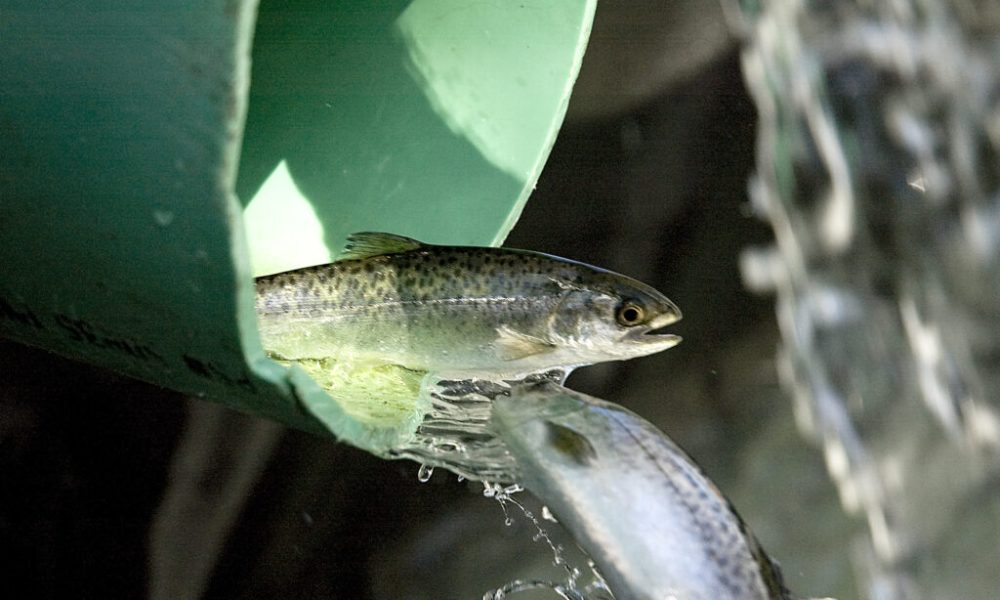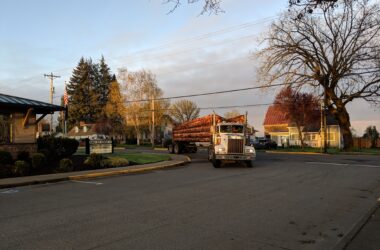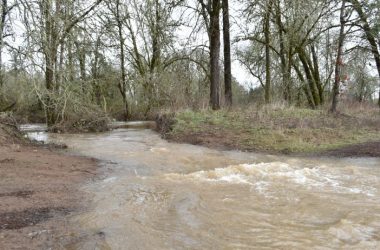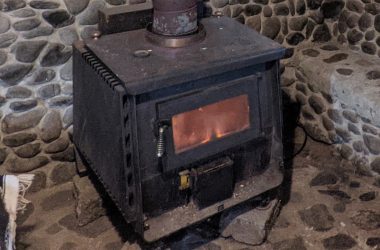The Oregon Department of Fish & Wildlife announced nearly $10 million dollars of available funding for the restoration of fish passages in Oregon, Dec. 5, 2022.
On Jan 4, 2023 ODFW officially announced a request for proposals and would begin accepting applications for grant money. The final due date for funding requests was Jan. 31, 2023.
The money is intended for projects aimed at removing or improving culverts and other blockages to fish passages.
The grant money comes from two sources: $5 million from the American Rescue Plan Act that was passed in 2021 and $4.41 million in funding from the Oregon Department of Transportation as part of an agreement with ODFW, according to ODFW-ODOT fish passage liaison Pete Baki.
Upcoming Projects
Many culverts and bridges in the Banks, Gales Creek, and Tillamook Forest area are owned by ODOT itself, however, none of these culverts will receive funding. Part of the funding agreement between ODOT and ODFW is that the money will not be spent on ODOT facilities according to Baki.
ODOT dedicates funds to a separate department within its organization for fish passage restoration projects, Baki said.
With the funding ODOT provides to ODFW the organization will prioritize projects that are included in a conservation and recovery plan, are on the ODFW fish passage priority list, benefit sensitive species, create or improve access to high quality habitat and provide a timeline that includes completion before Jan 31, 2024.
Many culverts on the ODFW priority list are in the western Tualatin Valley. They include culverts on the West Fork of Dairy Creek that runs through Banks and along Highway 26, the East Fork of Dairy Creek which runs through the Pumpkin Ridge area, and Gales Creek and its tributaries that run through the community of Gales Creek and surrounding areas.
While the deadline to apply for funding has passed, the official decision of who will receive funding has not been made.
Baki will evaluate each application based on the above criteria as well as recommendations from a review team who will look over applications and make recommendations.
Baki hopes to notify applicants of their funding status soon and get to work. This is because work on fish passage projects has to move fast. Construction can only take place during what is called an in-waterwork window. For the Tualatin Basin this window is from July 15 to September 30.
The work window is based on the migratory habits of common fish species and is put in place to minimize the impact that construction or other projects could have on fish populations.
Background
The fish passage relationship between ODFW and ODOT began in 2015 with a pilot period which ended in 2017. A new funding agreement began Jan. 1 2023 and is the third of such agreements according to Baki.
Even before the 2015 agreement, advocacy and work toward the restoration of fish passage was well underway. According to Baki, ODFW began a cost share program geared toward fish passage restoration in the early 90’s.
Organizations like the Tualatin Valley Watershed Council and the Tualatin Soil & Water Conservation district who are known supporters of fish passage restoration projects were founded in the early and mid 90’s.
Why Restore Fish Passages?
According to Stephen Cruise, Project Manager in the Operations and Maintenance Division of Washington County, these projects are aimed at improving the “resiliency” of habitats that support a variety of fish including salmonids like coho or cutthroat as well as steelhead trout and pacific lamprey.
“If you only have access to one stream, and that stream experiences a landslide, or wildfire, or some other major disturbance, you’re impacting 100% of that population,” Cruise said. “Really, our goal is to restore access to all the streams that have that habitat.”
In the summer as water temperatures rise, migratory fish species swim up rivers in order to find cooler water. These are also the areas where fish spawn and lay eggs. As a result they are vitally important to the longevity of these species.
According to Scott McEwan, Executive Director of the Tualatin River Watershed Council, while some fish do still make it past barriers it is the young fish that struggle the most.
“For small steelhead, coho and cutthroat, a three foot barrier might as well be 100 feet high,” McEwan said.
And while the focus of fish passage restoration projects is to protect the fish, many projects also help to restore vital infrastructure. According to Cruise, Washington County fish passage projects often prioritize culverts and bridges that are already in need of repair.
Washington County has not applied for a grant through the ODFW fish passage program, however, the county is moving forward with its own plan to secure grant funding for the replacement of two culverts on White Creek near the community of Gales Creek.
The county is requesting $1.7 million from the United States Department of Transportation for Aquatic Organism Passage for the project.
My name is Jake Moore. I was born and raised here in Banks, Oregon, and have recently returned home after completing my Bachelor of Arts in Journalism at the University of Oregon. During my time in Eugene I wrote for the student run paper the Daily Emerald as a senior news reporter and served as a reporting intern at Eugene Weekly. I look forward to working with community members and reporting on local news.
Contact me at [email protected].






